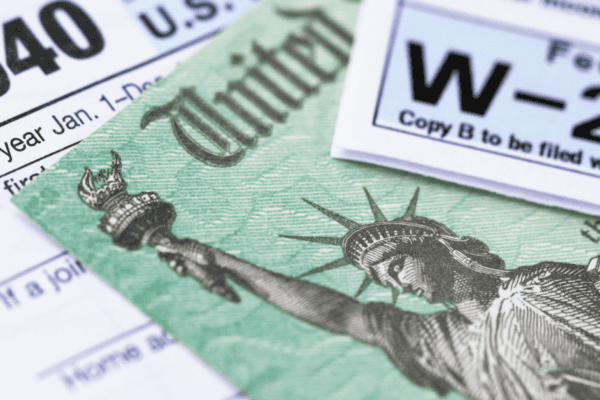Should I really be buying a home during a global pandemic? Is now the right time? The answer is… wait for it… maybe!
Unlike the Great Recession of 2008, housing prices have not come plummeting down, and many predict they won’t. While prices may not be a particular bargain, borrowing to finance the purchase is. With interest rates hovering around historic lows, the cost to borrow is relatively cheap. Ultimately, the right time to buy comes down to your personal situation. But, if you’re comfortable with your job, have a consistent income, and buying a home fits into your long-term goal planning, then perhaps now is the right time. Let’s talk about considerations and next steps…
Before You Start Looking
Determine if buying is right for you.
It’s important to consider why you are buying a home and if buying a home fits into your current financial life before jumping into it. Maybe renting, for now, is something you should consider. Never leave all options off the table.
Renting isn’t always “throwing your money away,” as some will tell you. There are many reasons why renting can make perfect sense. For example, if you plan to live in a home for only a year or two, buying could end up costing you more than renting would have! Other good reasons to rent include getting to know a new area, job uncertainly, inability to afford homeownership, or simply not wanting the hassle that can come with homeownership.
Establish your price range.
Don’t fall in love with a home only to realize later it’s not realistic with your budget. Start by determining what you can afford, then begin the fun part of searching for your dream home! It’s important to consider both upfront and ongoing costs when determining what you can afford.
Upfront costs include things like a down payment of 3% – 20% (first time home buyers often put around 5% down), closing costs for the buyer (generally between 2 – 5% in Maryland), and keeping an emergency cash fund of at least 3 to 6 months of expenses.
Ongoing costs include things like the mortgage principal and interest payments, real estate taxes, homeowners insurance, possible mortgage insurance (generally required if putting less than 20% down), possible HOA fees, and general maintenance costs (remember — you are now in charge of the repairs and maintenance). A quick way to estimate your mortgage payment is to use an online calculator like the one found on Bankrate’s website here.
The rule of thumb targets spending 28% of household gross income on total housing expenses. No! This is a threshold set by lenders to help them decide who they will approve to lend to. Lenders have chosen 28% because of the math behind the number of people that will default on the payments versus those that will continue to make payments that remain most profitable for them. It’s best for the household buying the home to aim for a spending ratio below 28%. Each household’s situation is unique, so it’s important to determine what is affordable for your household based on your personal financial goals and lifestyle.
Don’t Forget About Pre-Approval – Getting pre-approval for a loan is not required, but it will give you the true figure a lender is willing to provide to you, and it shows a seller that you’re serious about buying the house. It’s important to contact multiple lenders to compare interest rates and fees during this step of the process.
During the Search
It’s finally time to hunt for your dream home! According to the annual survey conducted by the NATIONAL ASSOCIATION OF REALTORS® on recent home buyers, “for 44% of recent buyers, the first step was to look online at properties, while 16% started by contacting a realtor”, but it took online searchers more than twice the amount of time it took those working with a realtor to buy a home. Either option is great, so choose what you’re most comfortable with.
Make your offer. Once you find the right home, you can get serious about putting a bid on it. Depending on the area and current market conditions, your initial offer may be below, at, or above the seller’s asking price for the home. The expertise of a good real estate agent is important here. The offer is where the negotiations begin.
Closing the Deal
Congrats! The seller has accepted your offer. The next step is to get the home inspected by a professional. This is where any spiders in the closet will hopefully be uncovered (e.g., damaged roof, mold in the basement). If there are issues, it’s important to negotiate who will be responsible for the repair. Your real estate agent will help you decide what a realistic request is from the seller should these issues be uncovered.
Now that the final price is ironed out and you’ve agreed to terms with the seller, it’s time to close the deal. You’ll both sign paperwork on the close, and you will need to go back to your lender to complete the mortgage paperwork. At this stage, there will also likely be additional closing fees for things like title searches, appraisals, and mortgage insurance (if less than 20% down payment). Once all of these steps are complete, the house is officially yours! Congratulations! It’s time to move in, put your feet up, and enjoy your new home.
Tips to Remember!
Down payment help – Many states and cities offer first-time homebuyers grants to help with closing costs and down payments. Make sure to check! There is also a unique rule that allows first-time homebuyers to withdrawal $10,000 from their IRA. Doing this can get complicated, though, and may not be the best choice for your financial future. In a real pinch, you can always pull out contributions/basis (not the earnings) from your Roth IRA. Since the Roth IRA is a precious retirement vehicle, it’s best to avoid this if possible. First-time homebuyers can also consider taking a short-term loan from their 401(k) if their plan allows it.
Tax breaks – Make sure to tell your accountant, or indicate your tax software, that you’ve purchased a home!
Homeowners Associations (HOA) – Ask what the fees are ahead of time and inquire about any pending onetime expenses to the HOA (major repairs to common areas, lawsuits, etc.). You don’t want to get blindsided by a large, one-time expense right after you purchase your home!
All loans aren’t created equally. Small down payments may sound appealing but will generally be paired with some additional costs like mortgage insurance. This is common with FHA Loans, Conventional 97 Loans, and other loans requiring less than a 20% down payment. Ensure you understand what these costs are if you can avoid them and what options there are for removing them in the future.
15 year vs. 30 year – Choosing the term of the loan may not be an option depending on the type of loan you utilize; however, if you do have the option, there are pros and cons to each to consider. A 15-year term will cost less interest over the mortgage’s lifetime and will start to pay down principal faster than a 30-year loan. The tradeoff is that you will have a larger monthly payment to cover. The major benefit to the 30-year option is the lower monthly payment, which provides more cash flow flexibility should there be an unexpected decrease in your typical cash flow. In either term, you can always overpay (pay more than the required) the monthly payment to pay down the principal faster and decrease the overall time it takes to pay off the mortgage. (NOTE – There are other term options available, but these are the more typical choices.)
Buying a home is a big decision but an exciting decision! If you’re feeling anxious about a home purchase, concerned about organizing and creating clear long-term goals, or worried about your budget or general financial well-being, pick up the phone and give us a call (443-564-4600). I’m here along with other CFP® professionals on the private client and participant advice team to help you make better financial decisions to improve your life and the lives of those that depend on you.



